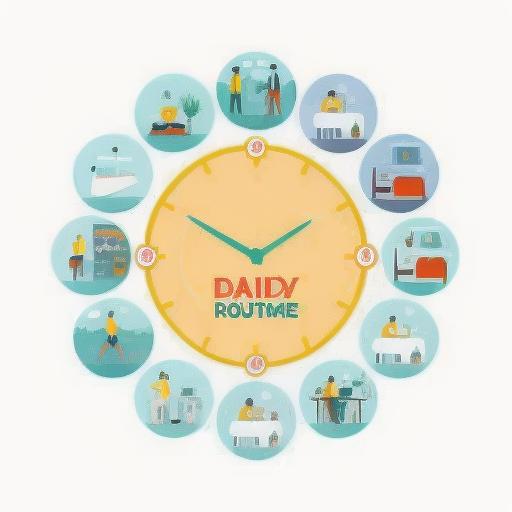Have you ever found yourself rummaging through the corridors of your mind, searching for the perfect word in English, only to stumble and resort to your native language? The secret to seamless communication in another tongue lies not just in vocabulary or grammar, but in the very way you frame your thoughts. Imagine a world where English isn’t just a language you speak; it becomes the lens through which you view, interpret, and express reality. Welcome to the transformative journey of thinking in English—a skill that might seem daunting at first, but is surprisingly easy to master with the right approach. In this article, we’ll unravel the cognitive twists and turns that can guide you to not just speak, but think in English effortlessly. Ready to reshape your mental landscape? Let’s dive in.
Table of Contents
- Immersing Your Mind in an English Environment
- Daily Practices to Strengthen Your English Thinking Skills
- Leveraging Media and Resources for Maximum Fluency
- Building Confidence Through Consistent Practice and Feedback
- In Retrospect

Immersing Your Mind in an English Environment
To truly embrace thinking in English, surround yourself with the language in your everyday life. Start by changing the settings on your phone, computer, and social media accounts to English. This simple switch can help you become accustomed to seeing and processing English more naturally. Additionally, try listening to English music or podcasts while commuting; you’ll immerse yourself in the rhythm and structure of the language. Watching your favorite TV shows or movies in English with subtitles can also be incredibly beneficial; you’ll get to match the spoken words with their written form, reinforcing your understanding.
Another powerful method is to engage in English activities daily. Write a diary or journal in English, describing your day, your thoughts, and your plans. You could even leave sticky notes with common phrases or vocabulary around your house. Here are a few ideas:
- Grocery List: Write your shopping list in English.
- Morning Routine: Narrate your morning routine to yourself in English.
- Social Media: Post updates or tweets in English.
| Activity | Sample Phrase |
|---|---|
| Shopping | “I need to buy milk and bread.” |
| Personal Reminder | “Don’t forget to call Mom.” |
| Exercise | “Time for a 30-minute run!” |
By embedding English into your daily life, you create a constant flow of the language in and around your mind. This constant exposure is crucial for making English your natural mental go-to, thus making thinking in English feel effortless.

Daily Practices to Strengthen Your English Thinking Skills
One of the most effective ways to bolster your ability to think in English is by incorporating small, yet potent daily practices. Start by consistently surrounding yourself with the language. This can be done by labeling household items in English, setting your phone or computer’s language to English, or even listening to English radio stations or podcasts while you cook or commute. These seemingly minor adjustments immerse you in an English environment, making it more natural to think in the language. Additionally, try to narrate your day-to-day activities in English. This could be describing what you are doing at the moment, like, “I am brushing my teeth,” or planning out loud, such as, “I will make pasta for dinner.” Such practices transform routine actions into opportunities for language reinforcement.
Another powerful technique is to engage with interactive activities that compel you to think and respond spontaneously in English. For this, language exchange partners can be invaluable. Schedule short daily conversations, either through video calls or texts, focusing on different topics each day. Beyond this, consider the efficacy of using games and tools designed for language learners. For example, playing word games like Scrabble or using language apps can make the learning process fun and engaging. Here’s a quick breakdown of recommended daily activities to consider:
| Activity | Engagement Time |
|---|---|
| Labeling Items | 5 minutes |
| Narrating Actions | 10 minutes |
| Language Exchange | 15 minutes |
| Word Games | 10 minutes |
Incorporating these practices not only strengthens your English thinking skills but also seamlessly integrates language learning into your daily routine.

Leveraging Media and Resources for Maximum Fluency
When aiming for maximum fluency in English, leveraging diverse and engaging media is key. Integrate a mix of movies, podcasts, music, and books into your daily routine. Consuming content that entertains and educates simultaneously helps maintain interest and enhance language retention. Dive deep into genres that captivate you, whether it be thrilling mystery novels or thought-provoking documentaries. Balancing visual and auditory inputs is crucial, as it nurtures well-rounded comprehension skills. Remember, the ultimate goal is to immerse yourself in the language environment, naturally absorbing new words and phrases.
Beyond multimedia, use a variety of resources to boost your fluency. Consider these effective tools:
- Language exchange apps: Connect with native speakers for real conversation practice.
- Flashcard apps: Efficiently build and retain vocabulary.
- Online forums and communities: Engage in discussions with fellow learners and experts.
Additionally, creating a study schedule that combines structured learning with informal practice can substantially improve fluency. For instance:
| Morning | 15 minutes of podcast listening |
| Afternoon | 30 minutes of reading an English book or article |
| Evening | 45 minutes of interactive language app practice |

Building Confidence Through Consistent Practice and Feedback
Practice leads to improvement, and improvement leads to confidence. When you make it a habit to think in English every day, you gradually become more comfortable with the language. This doesn’t mean you have to spend hours every day – even short, consistent practice sessions can have a significant impact. You could start by internally narrating your day-to-day activities in English or thinking of possible responses while watching English-language content. What’s important here is the regularity, ensuring your brain gets those frequent touchpoints with the language.
Yet, practicing alone isn’t enough; feedback plays an essential role in this journey. Without it, how would you ever know if you’re on the right track? Seek feedback through various means, such as engaging in conversations with native speakers, using language exchange apps, or even enrolling in courses. Having a friend or mentor correct your mistakes can help you avoid reinforcing bad habits. Here are some key steps to incorporate feedback into your practice:
- Join online forums or communities
- Pair up with a language buddy
- Participate in workshops or meet-up groups
| Steps | Tools |
|---|---|
| Daily Practice | Language Apps (e.g., Duolingo) |
| Constructive Feedback | Online Tutors, Language Exchanges |
In Retrospect
In the grand tapestry of communication, thinking in a different language unravels new threads, weaving a richer, more vibrant understanding of the world around you. By immersing yourself in English, you unlock doors to novel thoughts, uncharted expressions, and a broader horizon of cross-cultural connections. Remember, it’s not just about translating words but embracing a mindset, cultivating curiosity, and savoring the fascinating journey of linguistic exploration. Whether you’re treading lightly on the shores of vocabulary or diving deep into the ocean of idioms, each step you take brings you closer to fluency. So, embark on this adventure with enthusiasm and grace, knowing that every challenge you face is a stepping stone to mastering the art of thinking in English. Happy learning!






